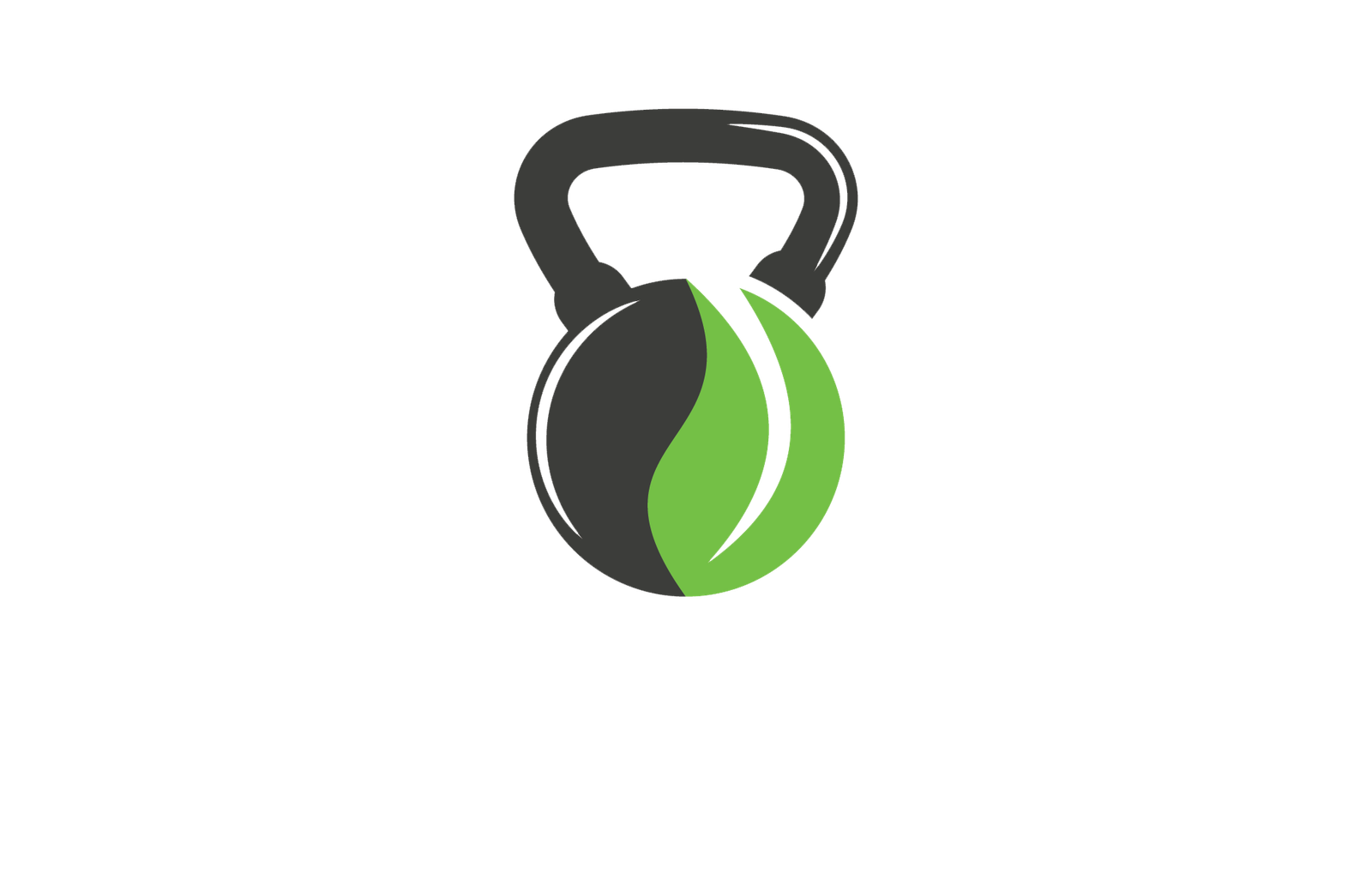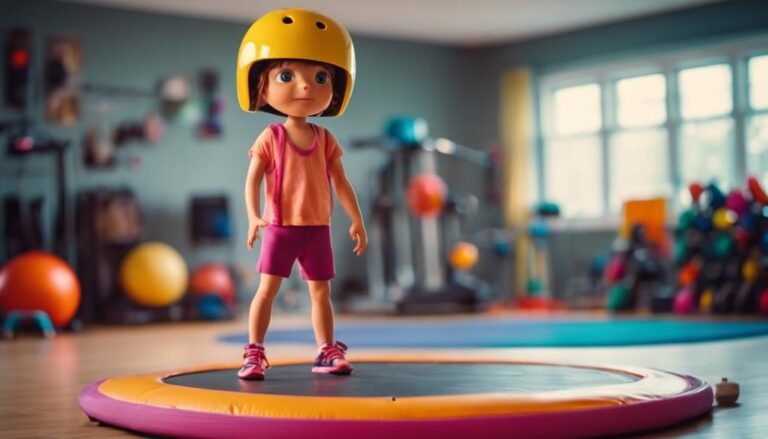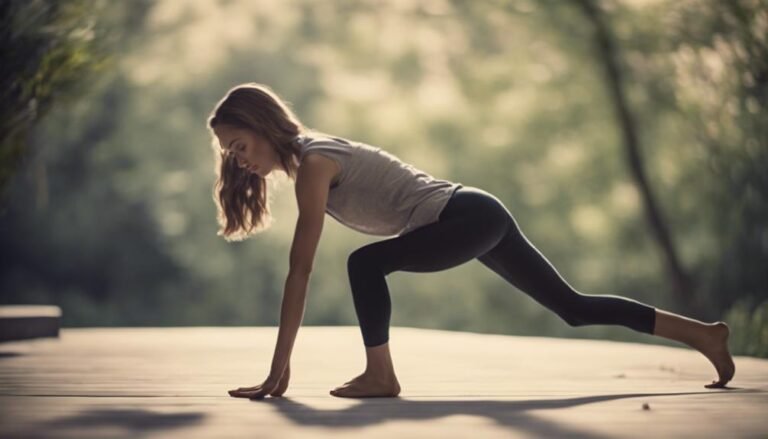Don't miss our holiday offer - 20% OFF!

Core Strengthening Exercises You Can Do at Home
Optimize your posture, balance, and athletic performance with these effective core exercises that can be done from the comfort of your own home.
We're ditching the gym membership and building a rock-solid core at home with simple, effective exercises that improve posture, balance, and overall athletic performance. We'll target essential muscles like the transverse abdominis, obliques, and lower abs with exercises like planks, Russian twists, and leg raises. Mastering proper form and engaging our core muscles is vital for preventing injuries and achieving a stronger, leaner body. With consistent practice and a nutritious diet, we'll be on our way to a healthier, more resilient core. Now, let's get started on our journey to a stronger core and tap our full potential!
Key Takeaways
- Master the plank exercise to engage core muscles and improve overall athletic performance and posture.
- Incorporate bodyweight exercises like Russian twists and bicycle crunches to challenge core stability and boost functional fitness.
- Use the pelvic tilt exercise to target the transverse abdominis muscle and improve core endurance.
- Perform leg raises to flatten and strengthen the lower abs, and bicycle crunches to target the entire core.
- Incorporate dynamic movements like rotational strength exercises to develop rapid-fire contractions for precision and agility.
Building Core Strength at Home
We can ditch the gym membership and still build a rock-solid core in the comfort of our own homes with a few simple, yet effective exercises. With a little dedication and consistency, we can achieve a strong, stable core that will improve our overall fitness and well-being. Home workouts are a great way to get started, and the best part is that we don't need any fancy equipment or a lot of space. We can do bodyweight exercises like planks, crunches, and leg raises that target our core muscles.
In addition to regular exercise, we should also focus on core nutrition. Eating a balanced diet rich in protein, healthy fats, and complex carbohydrates provides our bodies with the necessary fuel to build and maintain muscle mass. A strong core is essential for good posture, balance, and overall athletic performance. By combining a consistent home workout routine with a nutritious diet, we'll be on our way to a stronger, leaner, and healthier body. So, let's get started and take the first step towards building a rock-solid core from the comfort of our own homes!
Essential Core Muscles to Target
Now that we're committed to building core strength at home, let's identify the essential muscles we need to target. We'll focus on two key areas: our abdominal muscle groups, which include the transverse abdominis, obliques, and lower abs, and our lower back stabilizers, which play a critical role in maintaining good posture and preventing injuries. By strengthening these core muscles, we'll improve our overall athletic performance, reduce our risk of injury, and enhance our overall well-being.
Abdominal Muscle Groups
Our core's foundation lies in the abdominal muscle groups, which comprise four essential muscles that work together to provide stability and support for our entire body. We're talking about the transverse abdominis, external obliques, internal obliques, and rectus abdominis. These muscles work in harmony to maintain good posture, facilitate movement, and even support our digestive system. To optimize our core strength, we need to fuel our bodies with a balanced diet, focusing on Core Nutrition that includes lean proteins, complex carbs, and healthy fats. Understanding Abdominal Anatomy is vital in targeting the right muscles and avoiding injuries. By strengthening our abdominal muscles, we'll improve our overall athletic performance, reduce our risk of injury, and even enhance our overall well-being. By incorporating exercises that target these muscles, we'll be able to achieve a stronger, leaner, and more resilient core. So, let's get started on our core-strengthening journey and tap into our full potential!
Lower Back Stabilizers
Frequently, we overlook the lower back stabilizers, a vital set of muscles that work in tandem with our abdominal muscles to provide a strong, stable core. As we focus on strengthening our core, it's essential to target these muscles to achieve optimal spinal alignment and prevent muscle imbalances.
Here are some key lower back stabilizers to target:
| Muscle | Function |
|---|---|
| Latissimus Dorsi | Stabilizes the lumbar spine and pelvis |
| Erector Spinae | Maintains posture and prevents slouching |
| Trapezius | Supports the shoulder blades and upper back |
| Rhomboids | Stabilizes the scapula and improves posture |
| Quadratus Lumborum | Supports the lumbar spine and pelvis |
Plank Exercises for Beginners
As we initiate our core strengthening journey, mastering the humble plank exercise is a crucial first step, and with these beginner-friendly variations, we'll be well on our way to a stronger, more resilient core.
When it comes to proper form, engaging our core muscles by drawing our belly buttons towards our spines is crucial. This will help stabilize our bodies and prevent straining our backs. We should also focus on maintaining a straight line from head to heels, with our shoulders relaxed and our weight evenly distributed between our hands and toes.
To mix things up and challenge ourselves, we can try these plank variations:
- Inverted plank: Place our hands on a wall or bench, and our feet on the floor, reversing the traditional plank position.
- Knee plank: Instead of using our toes, we'll use our knees as the anchor point, reducing the strain on our lower back.
- Plank jacks: Add some movement to our plank by jumping our feet between each rep, mimicking a jack-in-the-box motion.
Bodyweight Exercises for Core
Building on our plank foundation, let's explore other bodyweight exercises that'll challenge our core stability and ignite a stronger, more agile us. We're about to discover exercises that'll not only engage our core but also boost our functional fitness. That's right, we're talking about exercises that'll improve our daily movements and activities!
One of our favorite bodyweight exercises is the Russian twist. It's a great way to target our obliques and improve our core endurance. All we need to do is sit on the floor with our knees bent and feet flat, then twist our torso from side to side, touching our hands to the ground each time. We can start with 10-15 reps on each side and increase as we build strength.
Another exercise we love is the bicycle crunch. This one targets our entire core, including our abs and obliques. We simply lie on our back with our hands behind our head, alternate bringing our knees towards our chest, and mimic the pedaling motion of a bicycle. We're aiming for 10-15 reps on each side as well.
These exercises will get our heart rate up and engage our core like never before. So, let's get moving and take our core endurance to the next level!
Pelvic Tilt for Stronger Core
As we focus on building a stronger core, we're excited to explore the pelvic tilt exercise, a game-changer for our core development. We'll master the proper tilt technique, which targets our transverse abdominis muscle, and discover the numerous benefits it brings to our overall core strength. By incorporating this exercise into our routine, we'll be amazed at how it transforms our entire core.
Tilt Technique Explained
We'll start by mastering the pelvic tilt, a foundational movement that helps us engage our core muscles more effectively. This technique is essential for building a strong core, and it's easier than you think! The pelvic tilt is all about adjusting our posture and spinal alignment to engage our core muscles.
To do it correctly, follow these simple steps:
- Imagine a string attached to your belly button, pulling it upwards and inwards: This will help you engage your transverse abdominis muscle, which is the deepest abdominal muscle that wraps around your spine and pelvis.
- Tilt your pelvis upwards and then back down again: This movement helps to activate your core muscles and improve your posture.
- Repeat this process several times, focusing on slow and controlled movements: This will help you build strength and endurance in your core muscles.
Benefits for Core
By incorporating the pelvic tilt into our daily routine, we can tap into a stronger, more resilient core that enhances our overall athletic performance and reduces our risk of injury. This exercise is a game-changer for our fitness journey, and we're excited to experience its benefits firsthand. With a stronger core, we'll notice improved posture, which will not only make us look more confident but also reduce our risk of back pain and other musculoskeletal issues. Our athletic performance will also get a boost, thanks to enhanced athleticism that comes with a stable and powerful core. We'll be able to run faster, jump higher, and lift heavier weights with ease. In addition, our risk of injury will decrease substantially, as our core muscles will be able to absorb shocks and stabilize our joints more effectively. By making the pelvic tilt a part of our daily routine, we're investing in a stronger, healthier, and more resilient body that's capable of achieving our fitness goals.
Russian Twists for Obliques
Let's target our obliques with Russian twists, a powerful exercise that sculpts our core and boosts overall athletic performance. We're not just talking about aesthetics; strong obliques can substantially improve our rotational strength and functional movement. This means we'll be able to generate more power in our daily activities and sports, whether it's golf, tennis, or even just carrying groceries.
To perform a Russian twist, sit on the floor with our knees bent and feet flat, leaning back slightly. Hold a weight or medicine ball and twist our torso from side to side, touching the weight to the ground beside us. Here are some key takeaways to keep in mind:
- Start with lighter weights and gradually increase the load as we build strength
- Focus on slow, controlled movements to engage our core and avoid using momentum
- Aim for 3 sets of 12-15 reps to really challenge our obliques
Leg Raises for Lower Abs
Now that we've targeted our obliques, it's time to shift our focus to the lower abs, where leg raises come into play, helping to flatten and strengthen this notoriously stubborn area. We're excited to tackle this often-neglected region, and the best part? We can do it from the comfort of our own homes, no gym membership required! As a great alternative to morning workouts at the gym, we can start our day with a series of leg raises that will get our cores fired up and ready to tackle whatever the day throws our way.
To get started, we'll lie on our backs with our arms extended overhead and legs straight. From here, we'll lift our legs about 6-8 inches off the ground, holding for a brief moment before slowly lowering them back down. We'll aim for 3 sets of 10-12 reps, taking breaks as needed. As we progress, we can increase the difficulty by lifting our legs higher or adding weight to our ankles. With consistent practice, we'll start to notice a significant difference in our lower abs – and that's a great motivator to keep us coming back for more!
Bicycle Crunches for Definition
We're ready to kick our core workout up a notch with bicycle crunches, a dynamic exercise that targets the entire core, including the lower abs, obliques, and upper abs, for a chiseled, defined midsection. This exercise is a game-changer for our workout routine, and we're excited to incorporate it into our daily routine.
To get the most out of bicycle crunches, proper crunch form is crucial. Here are some key takeaways to keep in mind:
- Start with your hands behind your head, but avoid pulling on your head or neck.
- Lift your shoulders off the ground, curling up towards your knees.
- Alternate bringing your knees towards your chest, as if pedaling a bicycle.
Dynamic Movements for Core Power
As we shift our focus to dynamic movements, we're about to tap core power like never before, incorporating explosive exercises that will challenge our entire core and propel us towards a stronger, more resilient midsection. We're not just building strength; we're building power. Dynamic movements are all about generating force quickly, and that's exactly what we need to take our core to the next level.
Through rotational strength exercises, we'll target our obliques and lower back, creating a strong, stable core that can withstand any challenge. We'll incorporate explosive training to develop rapid-fire contractions that will have us moving with precision and agility. Imagine being able to twist, turn, and pivot with ease, all while maintaining a rock-solid core. That's what we're aiming for. By incorporating dynamic movements into our routine, we'll tap a new level of core power that will translate to everyday life, sports, and beyond. Get ready to harness your inner strength and take your core to new heights!
Frequently Asked Questions
Can I Do Core Exercises With a Bad Back or Injury?
"We understand concerns about exercising with a bad back or injury; however, with proper body modifications and a focus on injury prevention, we can adapt core exercises to accommodate our needs and safely strengthen our core."
How Often Should I Exercise My Core for Optimal Results?
We commit to exercising our core 2-3 times a week, prioritizing consistency matters and progressive overload to achieve peak results, as we challenge ourselves to build strength and endurance over time.
Are Core Exercises Effective for Weight Loss?
"Just like a spark ignites a flame, core exercises fuel our weight loss journey! We find that they boost our Metabolic Rate, helping us achieve a Calorie Deficit, leading to a leaner, stronger us – it's time to get moving!"
Can I Do Core Exercises During Pregnancy or Postpartum?
"We're excited to exercise during pregnancy and postpartum! With prenatal modifications, we safely engage our pelvic floor and benefit from core exercises, supporting a healthier pregnancy and speeding up postnatal recovery – it's a win-win!"
Do I Need to Warm up Before Starting Core Exercises?
"We always warm up before starting core exercises to prevent injuries and get the most out of our workout. Dynamic stretching gets our hearts rate up, activates our muscles, and provides cardiovascular benefits – it's a must!"
Conclusion
We've got this! With these core strengthening exercises, we're on our way to a stronger, leaner, and more toned body. Did you know that a study by the American Council on Exercise found that 70% of people who exercise regularly experience significant improvements in their overall physical fitness? By incorporating these exercises into our daily routine, we'll be joining the ranks of the fit and fabulous in no time!



